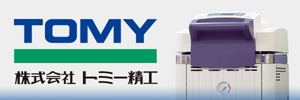OA-31 (JTK0037):Distribution patterns of Verrucomicrobia along a meridional transect across the Pacific Ocean
Atmosphere and Ocean Research Institute
Verrucomicrobia has a ubiquitous distribution in not only soils but also marine environments, and they constituted on average 2 % of the water column bacterial community. Although they are assumed to be an active player in polysaccharide degradation of particulate organic matter such as marine snow, little has been reported on their distribution in particle-associated bacterial communities in the water column. So we focused on their lifestyles, particle-associated (PA) and free-living (FL) assemblages. The aim of this study was to determine distribution patterns of Verrucomicrobia in FL and PA assemblages. Here we report bacterial community profiles of 35 surface seawater samples along a meridional transect across the Pacific Ocean obtained by 454 pyrosequencing of the 16S rRNA gene V1V3 region.
Relative abundance of Verrucomicrobia was significantly (p value less than 0.05) higher in PA (0.15 – 26.6 %) than FL (0.53 – 2.3 %) assemblages and was also significantly (p value less than 0.05) higher in the southern hemisphere (FL, 0.16 – 2.3 %; PA, 0.25 – 26.6 %) than the northern hemisphere (FL, 0 – 0.95 %; PA, 0.22 – 7.2 %). We found that the class Verrucomicrobiae (including subdivision 1) dominated in the northern subarctic and the equatorial stations and Opitutae (including subdivision 4) dominated in the other stations.
We have revealed preferential occurrence of Verrucomicrobia in the PA assemblages of the southern hemisphere and possible niche partitioning at the class level. Such skewed patterns of their distribution may alter the organic matter fluxes in the water column through their high potential in polysaccharide degradation, and they might be a key player in the carbon cycle of the Pacific Ocean.
keywords:Microbial ecology,Verrucomicrobia,Pacific Ocean,particle-associated bacteria,pyrosequencing




